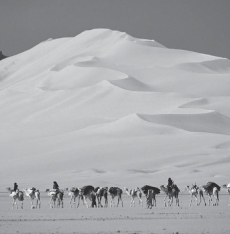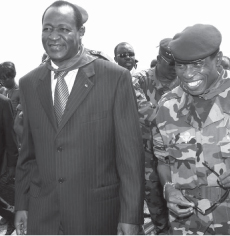THE HISTORY OF WESTERN AFRICA
THE BRITANNICA GUIDE TO AFRICA
THE HISTORY OF WESTERN AFRICA
EDITED BY AMY MCKENNA, SENIOR EDITOR, GEOGRAPHY AND HISTORY

Published in 2011 by Britannica Educational Publishing
(a trademark of Encyclopdia Britannica, Inc.)
in association with Rosen Educational Services, LLC
29 East 21st Street, New York, NY 10010.
Copyright 2011 Encyclopdia Britannica, Inc. Britannica, Encyclopdia Britannica,
and the Thistle logo are registered trademarks of Encyclopdia Britannica, Inc. All
rights reserved.
Rosen Educational Services materials copyright 2011 Rosen Educational Services, LLC.
All rights reserved.
Distributed exclusively by Rosen Educational Services.
For a listing of additional Britannica Educational Publishing titles, call toll free (800) 237-9932.
First Edition
Britannica Educational Publishing
Michael I. Levy: Executive Editor
J.E. Luebering: Senior Manager
Marilyn L. Barton: Senior Coordinator, Production Control
Steven Bosco: Director, Editorial Technologies
Lisa S. Braucher: Senior Producer and Data Editor
Yvette Charboneau: Senior Copy Editor
Kathy Nakamura: Manager, Media Acquisition
Amy McKenna: Senior Editor, Geography and History
Rosen Educational Services
Shalini Saxena: Editor
Nelson S: Art Director
Cindy Reiman: Photography Manager
Nicole Russo: Designer
Matthew Cauli: Cover Design
Introduction by Monique Vescia
Library of Congress Cataloging-in-Publication Data
The history of western Africa / edited by Amy McKenna.1st ed.
p. cm.(The Britannica guide to Africa)
In association with Britannica Educational Publishing, Rosen Educational Services.
Includes bibliographical references and index.
ISBN 978-1-61530-399-1 (eBook)
1. Africa, West--History. I. McKenna, Amy, 1969
DT475.H577 2011
966dc22
2010021500
On the cover: A Tuareg herder rests with his camels in Timbuktu, once a thriving centre of
trade and Islamic scholarship in Mali. www.istockphoto.com / Alan Tobey
On pages : Partial view of Elmina Castle (formerly called So Jorge da Mina) in present-day Ghana. Issouf Sanogo/AFP/Getty Images
CONTENTS
















INTRODUCTION

Map of northwest Africa, from the 10th edition of Encyclopdia Britannica, published in 1902.
T he many terrains of western Africaincluding deserts, grasslands, equatorial forests, river basins, and thousands of miles of coastlineare perhaps as diverse as the various peoples who have called the region home over the centuries. Although the countries of the area have faced innumerable hardships, they are also home to cultures that have drawn strength from their past and incorporated traditions from a wide range of influences. This volume examines the rich history of western African kingdoms and countries as they have variously struggled against invasions by other kingdoms, slavery, colonialism, and corruption, and emerged as independent states striving to secure economic growth and stability into the 21st century.
Human civilization in western Africa can be traced back many thousands of years. Archaeologists have found evidence in the Sahara of agricultural practices and cattle herding that date to 4000 BCE, before that region had turned into desert. These cultural developments mirror those that occurred in Egypts Nile Valley around the same time. Systems of trade evolved between the ancient population centres of western Africa and peoples to the north early on as well, and they persisted even after the desert emerged, as trans-Saharan trade routes linked northern and western Africa. Amazigh (Berber) tradesmen from Morocco and other lands to the north crisscrossed the desert sands to exchange cloth and salt for gold, ivory, and slaves. The domestication of the camel early in the 1st millennium CE furthered the expansion of trade across this region. Along with trade of goods and slaves, Islamic religious beliefs and practices eventually made their way across the Sahara.
During a period sometimes called the Golden Age of West Africa, a series of powerful empires developed in the western Sudan, an area of grassland plains that stretched roughly from Lake Chad to the Atlantic Coast of Africa, the northern reaches of which formed the southernmost border of the Sahara Desert. The ancient kingdom of Ghana (actually centred on the border of the modern-day countries of Mauritania and Mali and not in modern-day Ghana) was a wealthy centre of trade in the western Sudan with a sophisticated system of political and social organization. Ghana acquired its wealth by trading goldwhich it procured from other sourcesfor salt, as well as through farming and raising livestock. The people of Ghana possessed the advanced technologies of ironworking, and the kingdom commanded an impressive military. A system of import and export taxes helped enrich Ghana, and by the 9th century, it had become a rich and powerful empire.
In the mid-13th century, the wealthy kingdom of Mali with its abundant goldfields succeeded Ghana as the dominant power in the western Sudan. Under a king named Sundiata, the kings of Mali, who were members of the Keita clan, took over what was left of ancient Ghana, creating a more extensive empire. While the society of the western Sudan was largely pagan before this time, Islam had since spread among the traders and merchants.
Next page
































